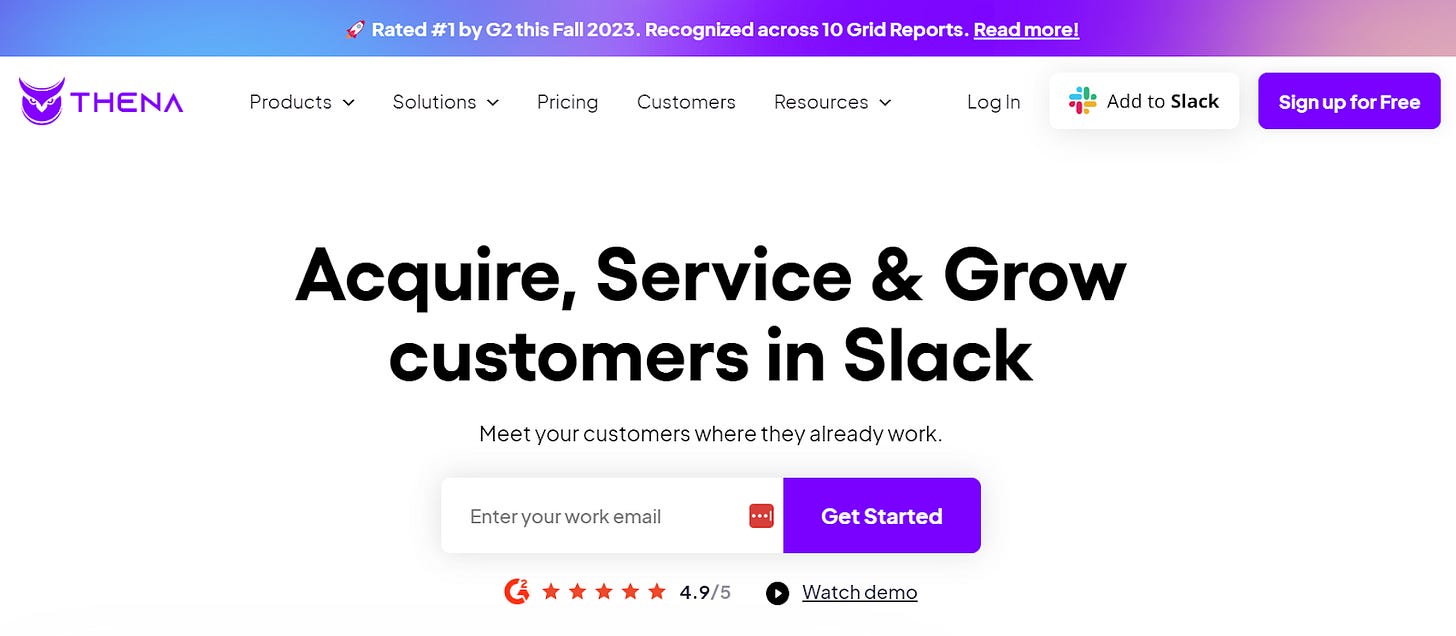Your guide to outbound automation
How Thena generates the output of 5-10 sales reps without hiring BDRs or SDRs
👋 Hi, it’s Kyle from OpenView. I’m back with a 🔥 edition of Growth Unhinged. Today I’m tackling the somewhat controversial topic of outbound automation, aka scaling outbound acquisition without hiring BDRs or SDRs.
My two cents: it sounds like a fad, but automated outbound is worth exploring. That’s especially true for SMB-focused or product-led businesses where traditional outbound would be prohibitively expensive. (I previously wrote about outbound and PLG last July.)
We’re all looking for ways to automate manual processes in order to accelerate growth. After all, that’s part of the thesis for why product-led growth can be such an amazing part of the go-to-market mix.
One area that I’ve been thinking about lately is outbound prospecting and, specifically, outbound emailing. Look, outbound hasn’t yet “died” despite the chatter or the SDR shaming. But manual outbound is certainly expensive and hard to make productive, particularly for a Seed or Series A-funded company with an unknown brand. According to Jeremey Donovan of Insight Partners, it used to take 200-400 touches per opportunity generated by cold outbound. Now that number has ballooned to 1,000-1,400 touches (!).
A fully manual outbound approach simply won’t cut it anymore.
That’s why I was so fascinated by the story of Thena, AI-powered customer success and support for companies using Slack, which has managed to achieve the productivity of five to 10 sales reps without hiring BDRs or SDRs. I interviewed founders Govind Kavaturi and Mike Molinet (a Branch co-founder) along with strategy and ops lead Brendan Kazanjian about how they automated outbound – and how you can do it, too.
Launching an AI product in only 6 months
Thena’s founders launched publicly on Product Hunt in October 2022 (they were the #3 product of the day), only six months after starting the company. The team had a bias toward releasing ASAP rather than waiting three or more years and building in isolation (the route taken by some PLG startups like Attio, which I profiled earlier this year).
The founders built Thena based on their personal experiences from Branch. Back then, they couldn’t keep track of the ~5,000 external users who communicated with Branch through 400+ Slack customer channels. Nor could they analyze the resulting Slack data or have visibility into the conversations that were happening.
“We didn’t want to spend three years building Thena in isolation only to finally bring it to market and hope people ‘got it’ — that kind of approach really only makes sense for deep-tech companies. Besides, we’d felt this pain ourselves. We’d grown up trying to grow and manage customers in Slack when Govind, Ankit and I were at Branch. We intimately knew the problems and the challenges. We also understood the opportunities. So let's build it. Let's launch it. And then let's see how the market responds to it.” – Mike Molinet
Their initial wedge for Thena was the ability to take a conversation and send it to another platform, enabling bidirectional chat. This would allow customers to organize their customer channels, connect to internal tools, and enable better customer support workflows. They believed this would be valuable to any size organization – from seed-funded to publicly traded companies – as long as they supported customers in Slack. And they made it easy to get started; users could simply Add to Slack.
Attracting the first 100 customers through founder-led outbound
Thena acquired its first 10 customers the way many SaaS apps do – from the founders’ own networks. While the founders learned a lot from those early customers, personal networks always start to dry up and it becomes paramount to go after customers you don’t know.
Their big bet was on the outbound motion to potential buyers in their ideal customer profile (ICP), and these efforts brought in 70% of Thena’s next 100 customers. Their hypothesis was that they were building a new product category that people didn’t know existed and so had to find their target customers and educate them on a different approach.

The first step was to get extremely clear about their ICP. It wouldn’t make sense to just prospect into any company using Slack. Because of what Thena’s product does, these companies' customers also need to be using Slack or else they’re not a fit (although that might change in the future). They honed in on:
(a) tech companies that
(b) sell technical products to
(c) dev, product, or engineering teams at other tech companies.
The more specific you can be about your perfect customer, the better your response rates will be from outbound efforts.
Thena’s initial outbound efforts were still founder-led. Govind and Mike would do everything they could to find the right people and connect with them in different ways, like on LinkedIn or over email. By around April or May of this year, roughly six months after the Product Hunt launch, they started to get a sense that their efforts were working. It was time to scale the approach – and that’s when they hired Brendan.
Automating outbound to attract the next 1,000 customers
Keep reading with a 7-day free trial
Subscribe to Kyle Poyar’s Growth Unhinged to keep reading this post and get 7 days of free access to the full post archives.




